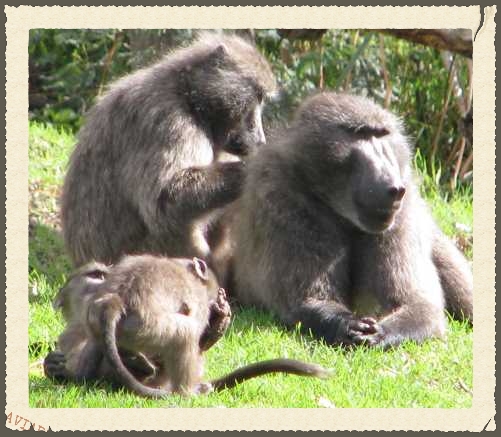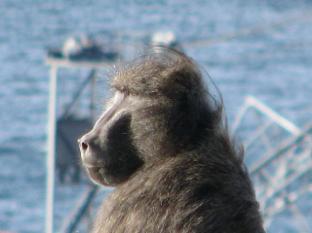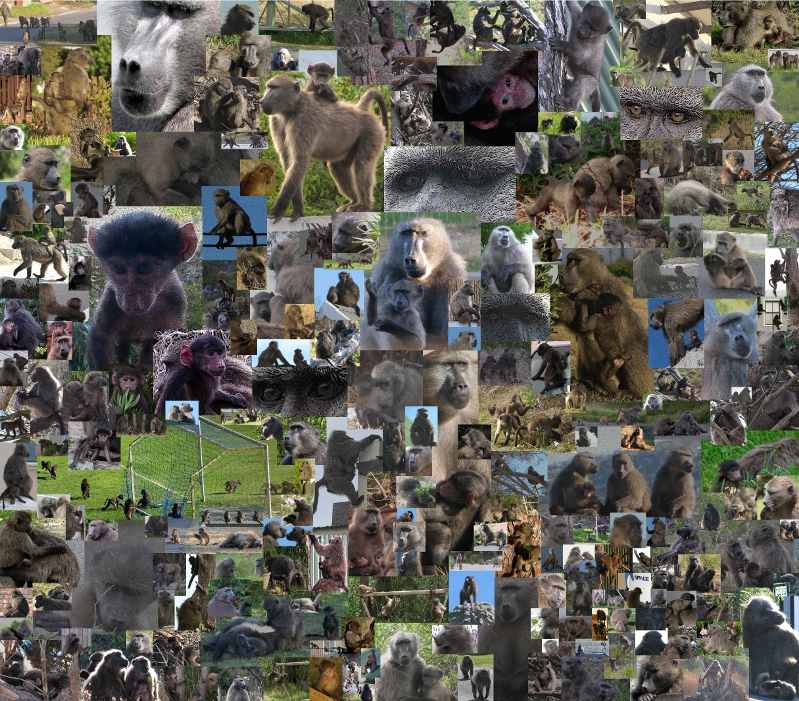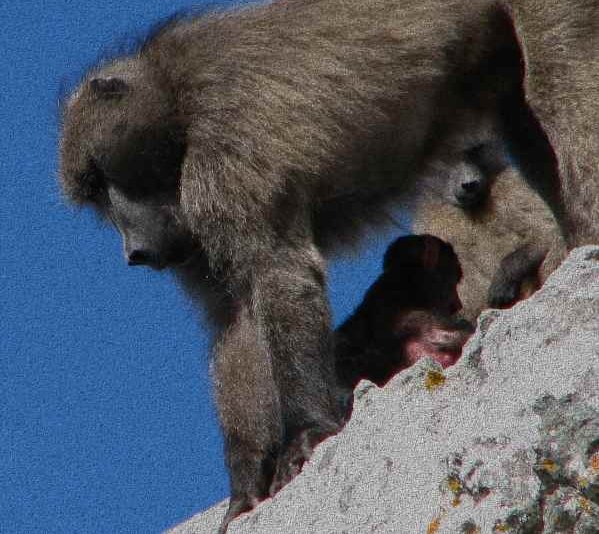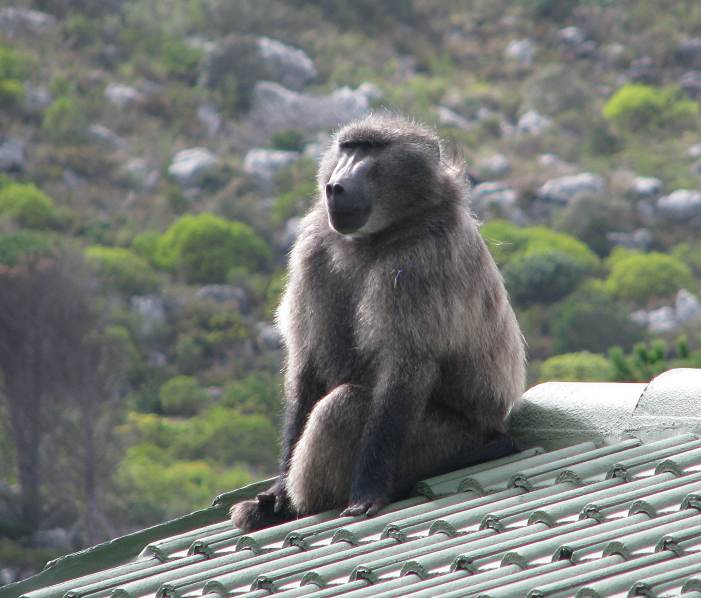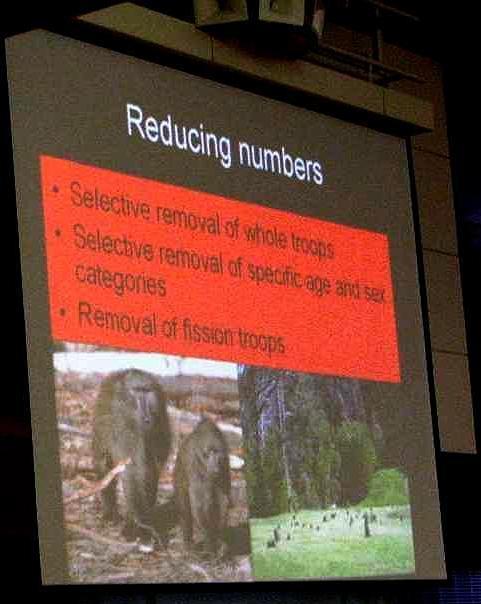
Acceptance of the above recommendations by a researcher made in July 2009 led to the acceptance of controversial dispersing male and raiding protocols in 2009 and 2010 respectively, the latter used to support culling Cape Town's Chacma baboons.

Dodger (SK7) shortily before being captured in December 2017, released in a different area and culled according to raiding protocols a month later.
DODGER (SK7)
YET ANOTHER YOUNG MALE BABOON CULLED ACCORDING TO CONTROVERSIAL PROTOCOLS
8 JANUARY, 2018
Dodger (right), officially coded SK7, is the first known baboon culled by management in 2018, the decision upsetting residents, who from both north and south troop areas, consistently expressed the opinion that he was a gentle baboon.
The young adult dispersing male was seeking a new troop, after being chased by the alpha male of his natal troop when challenging for dominance, a natural occurrence.
He sought to join the Da Gama troop but was captured before he could settle in. He had made friends with one of the females, a first step towards integration with the troop. They were seen walking together in the area at times.
This was however, splitting service provider manpower, seen as an additional reason why he was recommended by HWS to WAAC for approval for culling.
Residents noted he had an injured hand and called for veterinary help early, given the tragic endings for Phoenix and Surprise who were not given timeous veterinary help.
When Dodger was finally captured (the name given by residents, Dodger having eluded capture by HWS), he was taken to the SPCA, and a ruptured abscess treated. He was released in the vicinity of the northern troops.
Far away from his natal troop or area, faced with further injuries if he attempted to enter the four northern troops, he was culled on 8 January, 2018 under the raiding protocol, having been given less than a month since release on 13 December to integrate into a new troop.
Some residents had suspected he could be culled when away from the south area, where he was known, and looked out for, If left on his own, he was also more likely to wander into the urban area and enter unsecured windows or doors, which would count against him in terms of the raiding protocol, as it appeared to do.
Others expressed anger that Dodger had been killed. Once again there was a feeling that baboon management decisions lack transparency and the protocols, dispersing male and raiding protocols, have been used to take far too many baboon lives.
It was suggested the public also write to various people within the City of Cape Town to make their views known. The City funds the service provider. from residents' rates.
The picture on the left is a presentation by Justin O'Riain given at a baboon expert workshop and has proved to be the 'blueprint' of baboon management from 2009 till 2017, namely the 'selective removal' i.e.'culling' of baboons according to various categories.
At least 66 baboons have now been culled as a direct result of 'management decisions' supported by protocols.
It should be noted that the Da Gama troop which Dodger was attempting to join is the largest troop in the south with 54 members, and has showed no growth since 2012 at which time the current service provider was awarded the contract.
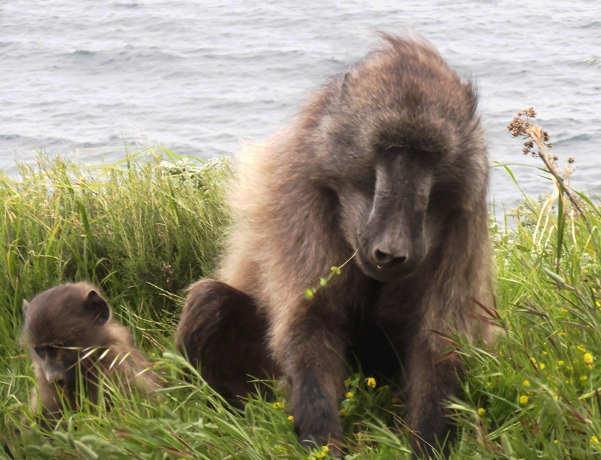
(Photo supplied)
SWB1Merlin, "grandfather" of the Smitswinkel troop pictured with LIttle Grace, is yet another of the Peninsula baboons recently culled.
Like other male baboons he was a caring and protective guardian of the young baboons, adopting LIttle Grace, following the death of her mother after poisoning.
Despite it being well-known and proven from the events of 2013 that more than one adult male is needed to protect the troop when DG1 Quondi (pictured above) was the only male left after others were put down or culled, he was also culled on 29 August 2014, Eddy having been culled on 1 August 2014. This leaves only Horace as adult male to defend the troop.

Adult male baboons protect babies and juveniles in the troop. When adult male baboons are culled, it can affect other members of the troop as new males may enter the troop and kill the young For example 10 babies and 1 juvenile died when this occurred in the Da Gama troop in 2013 and 3 juveniles were killed and 2 injured after the alpha male of the Zwaanswyk troop was culled leaving the troop without any adult males in June 2014.
Since 2009
Peninsula baboons
are under increased threat
Since 2009, when the first controversial raiding protocol was introduced, followed by a second protocol in 2010 with further reaching criteria, at least 51 baboons, including a number of alpha males, are known to have been culled in terms of these protocols.
At the same time the approximately 380 baboons in the 10 managed troops outside of Cape Point Nature Reserve, are still dying due to other causes, eg dogs or humans. Infanticides may occur after alpha or adult males are culled and other males take over.
With at least 43 baboons culled since 2012, unless there is a change of direction in management, the escalation of culling, though scientifically controversial, is expected to continue.
BABOONS KNOWN TO BE CULLED BY MANAGEMENT
IN TERMS OF CONTROVERSIAL PROTOCOLS BETWEEN
August 2009 - Early October, 2014
(THOSE WHO HAVE DIED DUE TO HUMAN/ DOG INDUCED INJURIES OR OTHER CAUSES ARE NOT LISTED)
1 BABOON - 2009
2 BABOONS - 2010
5 BABOONS - 2011
17 BABOONS - 2012
17 BABOONS - 2013
9 BABOONS - 2014
51 BABOONS CULLED IN TERMS OF PROTOCOLS
TK Tokai (Currently 4 troops)
Sol, John Travolta, TK1, TK5, TK7, TK8, TK9, TK10, TK12, TK14, TK17, TK18, TK20, TK21, TK22, TK23, TK26, TK27, TK29, TK32, TK35, TK37, TK38, TK39
GOB Groot Olifantsbos
GOB1, GOB2, GOB3 GOB4, GOB5, GOB8, GOB9, Sparkles
SWB Smitswinkel Bay
SWB1, SWB2, SWB4
WH/RH Waterfall/Redhill
RH1, WF1
DG Da Gama Park
DG1, DG3, DG4, DG5, DG7, DG9, DG10, DGF3, DGF8,
MC Misty Cliffs
MC1, MCF1
SK Slangkop
SK2, SK4. SK5
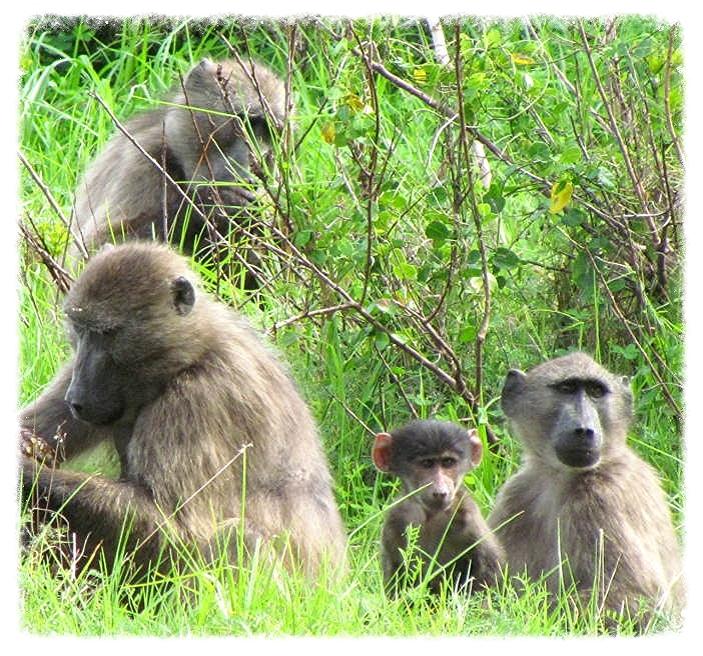
Females forage on natural vegetation as young sit nearby. Killing males of the troop, including alpha males, has led to detrimental effects for other members of the troop, including infanticide when other males have taken over the troop. In 2013, as a result of adult males being depleted, a male from a neighbouring troop entered and killed all 10 infants and a juvenile.
Cape Town's Chacma Baboons
under increased threat
Reducing numbers of Cape Peninsula baboons are some of the controversial recommendations made by the head of BRU in 2009 that have been increasingly adopted in baboon management.
A number of healthy male baboons including alpha males have been culled since then.
Other controversial strategies have been the ineffective holding the line on the urban edge which has allowed baboons too close to the urban area, aggressive tools including bearbangers, bullwhips and paintball guns, while suburbs enclosed by electric fencing are recommended as the long term solution, although baboons are known to be able to breach the fencing.

Presentation by BRU head, Justin O'Riain at 2009 baboon expert workshop.
Read more about the often controversial strategies based on scientific input that have been applied in management of the Peninsula baboons since 2009:-
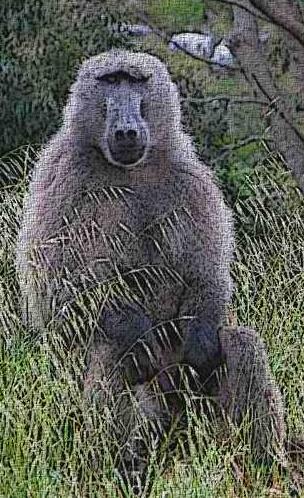
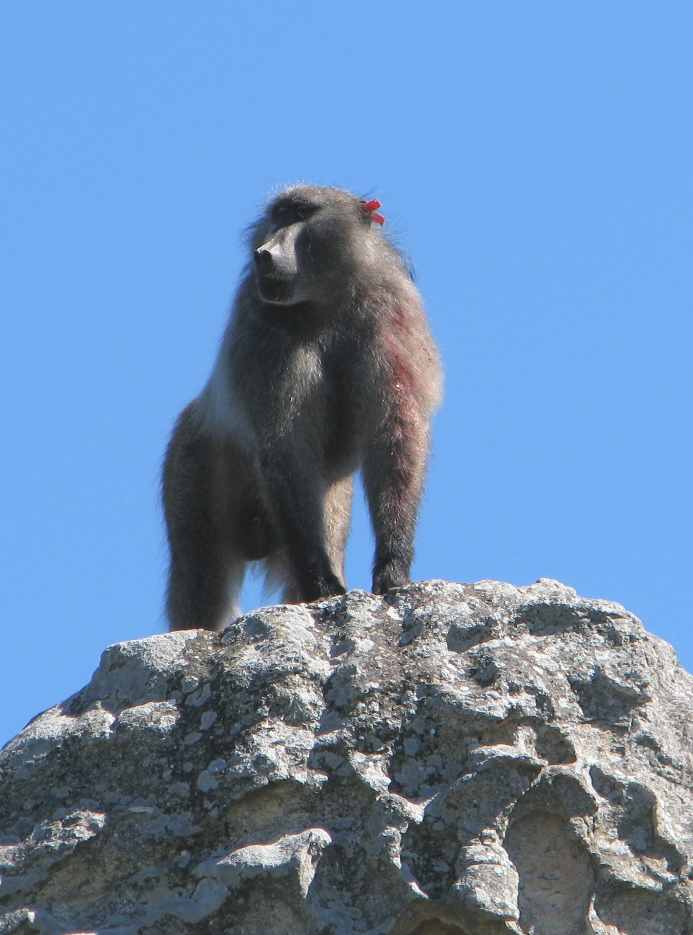

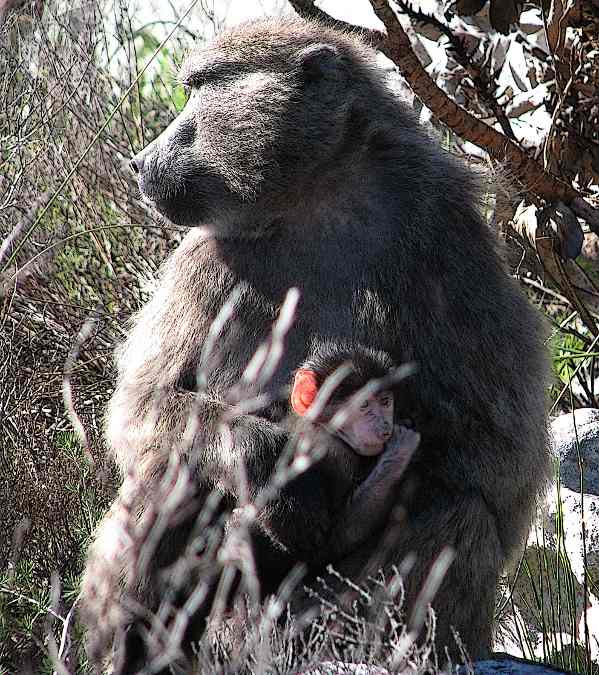
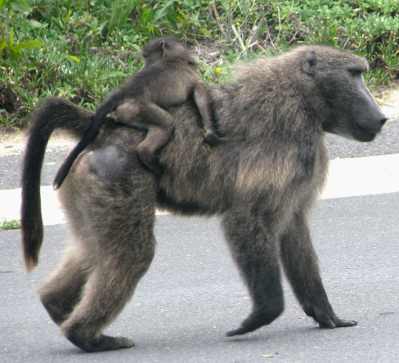
All Rights reserved L Thomas
No portion of content may be reproduced in any way without written permission

